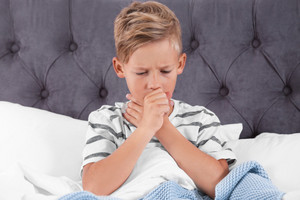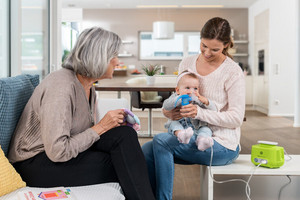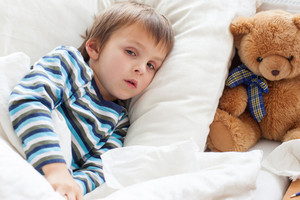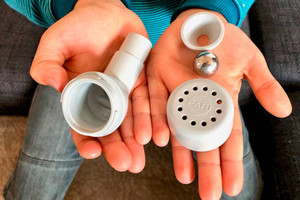Children often have a cough during the colder seasons. Find out here when you should go to the doctor, what helps ease a cough and improves your child’s well-being.

Regardless of whether a child or an adult has a cough: a cough is not an illness itself, but rather a protective mechanism of the airways when the self-cleaning function of the lungs is impaired and the cilia on the mucous membranes help expel small foreign particles and microorganisms.
There are actually millions of cilia on the mucosal membranes of the airways that gently move back and forth. The cilia have a fine coating of mucus that traps pathogens such as bacteria, fungi or viruses, as well as dust, pollen and other small molecule. The movement of the cilia transports these along with the mucus towards the throat, at which point the mucus is either swallowed or coughed up.
This effective cleaning system is, however, impaired if the airways are infected. In this case, more and thicker mucus is produced which is then difficult to transport out of the lungs and which builds up on the mucous membrane. The body responds to this by coughing to remove the mucus from the airways.

Your child should also see a doctor if they have a fever alongside the cough and if their behaviour is out of character.
If your child has a cough they should certainly drink plenty. This indirectly helps moisten the irritated mucous membranes via the bloodstream. It also makes the mucus in the airways thinner, making it easier for your child to cough up. Warm drinks such as sage tea or thyme tea are ideal.

If your child has a cough they should inhale saline solution with a nebuliser, such as the PARI BOY Junior or the PARI COMPACT2. Inhalation moistens and calms the airways. It also makes it easier to loosen the mucus in the bronchial tubes and leaves a pleasant sensation in the throat and airways.
It is also worth noting that isotonic saline solution (NaCl 0.9%) moistens the bronchial tubes and is as beneficial and natural for the airways as a walk in the salty sea air.
When inhaling hypertonic saline solution the focus is on liquifying the mucus in the airways. This happens due to the increased salt content in the lungs, which causes osmosis. If your child inhales hypertonic saline solution they can cough up the mucus better. PARI offers two hypertonic saline solutions: MucoClear 3% and MucoClear 6%. Inhalation devices, suitable masks and mouthpieces for children of any age and a range of PARI inhalation solutions are available in pharmacies and online shops.
Sometimes inhaling hypertonic saline solution makes the cough more intense. In this case, you can mix hypertonic saline solution with isotonic saline solution (NaCl 0.9%) to reduce the urge to cough. Your child will still benefit from the mucus-releasing effect thanks to the slightly elevated salt content.
Remember: If you inhale hot salt water in a cooking pot, only the water will evaporate but not the salt. The salt stays behind in the pot and cannot have any benefit in the airways.
» read more: The myth of steam inhalation – why steam does not help for coughs

If your child finds coughing painful, moist heat (chest wraps, a damp towel plus a hot water bottle) and gentle massage as well as stroking the chest may help. Here you can find an exact explanation and further tips on dealing with a painful cough. Special caution is advised for a painful cough and it is strongly recommended that you arrange a visit to the doctor.
While coughing is a protective mechanism and is important to expel mucus from the lungs, it is also strenuous. There are breathing techniques and devices that can help transport the secretions and that can be used to gently cough up the mucus. But first the child has to learn the breathing techniques (from school age). However, your child can use a breathing aid directly and benefit from the mobilisation of the secretions.
» explore more helpful breathing techniques die that both adults and children can use

A PEP system such as the PARI O-PEP helps to loosen mucus in the lungs. When your child breathes out through the device, a ball inside the mechanism rotates and so sets the air vibrating. These vibrations are then transmitted to the mucus in the bronchial tubes as your child breathes out where they then loosen the mucus from the bronchial walls. The PARI O-PEP is suitable for children from the age of five years and is available in the pharmacy or online shops.
Simple exercises help mobilise mucus in the lungs. These include:
On our blog you can find more helpful information and tips if your child is acutely ill.
Note: The information in this blog post is not a treatment recommendation. The needs of patients vary greatly from person to person. The treatment approaches presented should be viewed only as examples. PARI recommends that patients always consult with their physician or physiotherapist first.
An article written by the PARI BLOG editorial team.
© 2025 PARI GmbH Spezialisten für effektive Inhalation